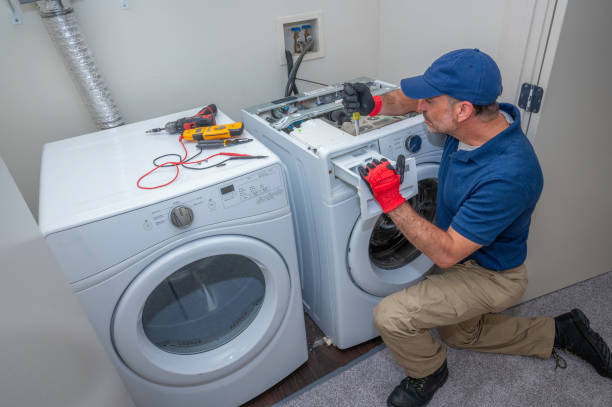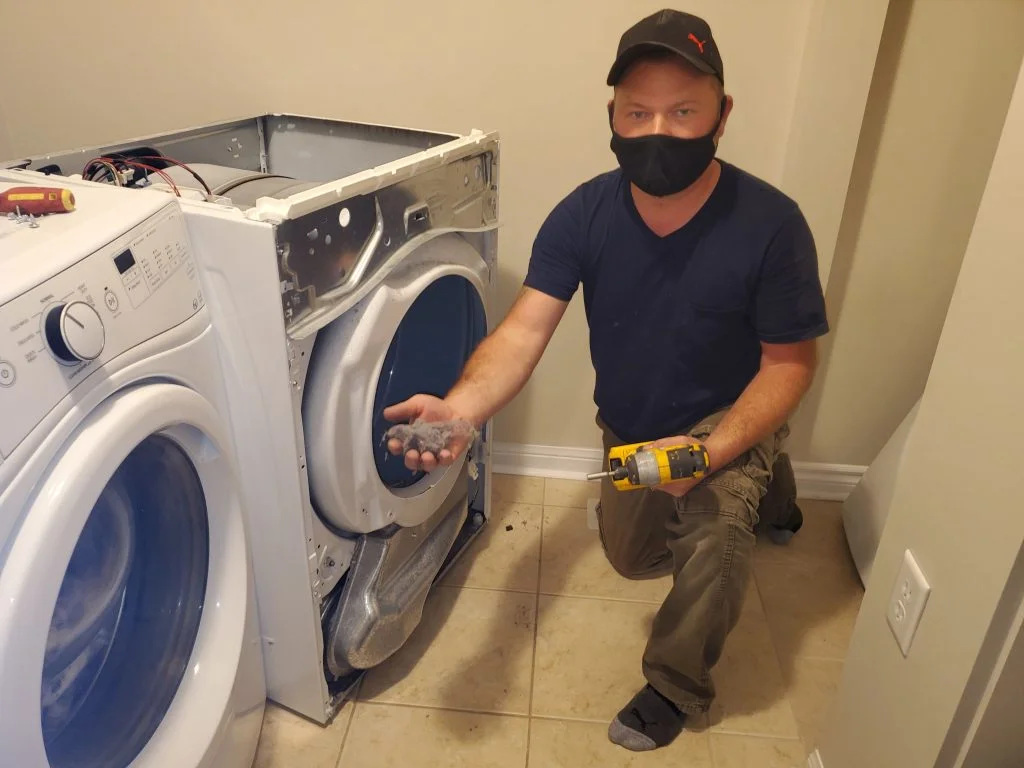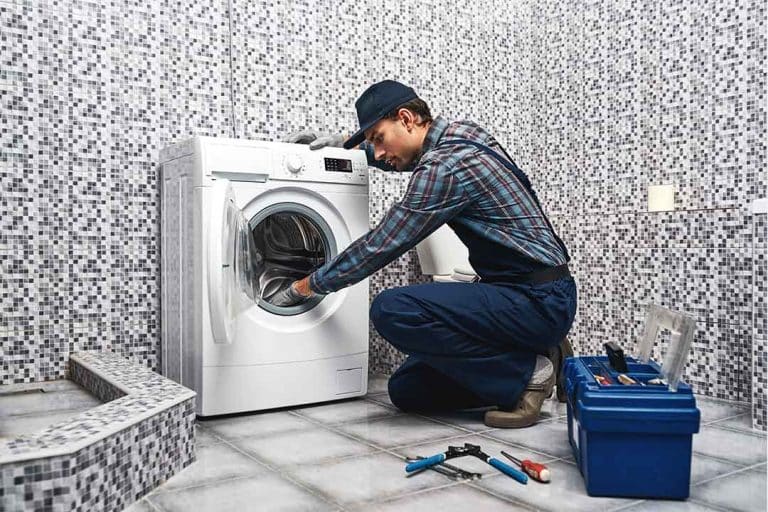Step-by-Step Guide to Cleaning a Washer Drain Pump

Keeping a washing machine running smoothly is vital for any household’s daily routine. From tackling dirty laundry to saving you precious time, this essential appliance simplifies life. However, clogs in the drain pump, error codes on the control panel, or issues with the lid switch can quickly throw off your schedule. In this comprehensive step-by-step guide, we’ll detail how to clean your washer’s drain pump and address common related problems. Whether you use a Samsung, Bosch, or another major brand, our tips will help ensure your washer operates efficiently, preventing costly repairs and lengthy downtime.

Understanding the Importance of a Clean Drain Pump
A drain pump plays a crucial role in expelling used water from the machine during the wash and rinse cycles. When debris, detergent residue, or foreign objects clog the pump, it can lead to a range of issues—from incomplete drainage to potential leaks. Regularly cleaning this component helps maintain a washing machine’s optimal performance, preventing excess water accumulation that leads to foul odors, slow drainage, or even total breakdowns. Clearing the drain pump can also save you from more complex problems requiring a skilled technician.
Common Issues Caused by a Clogged Drain Pump
Slow or Incomplete Draining
A blocked drain pump prevents water from flowing out at the correct rate, leaving clothes in a soggy mess. This problem not only extends cycle times but can also lead to wash cycles failing to complete properly.
Strange Noises During Spin
When there’s a blockage in the pump, you might hear strange sounds—like rattling or a low hum—due to the motor struggling. Noise could signal debris trapped inside the pump or rubber drain hose.
Potential Leaks or Overflow
A completely blocked drain hose or pump can cause water to back up and overflow, creating a water mess. Water damage can impact your kitchen or laundry area, risking mold or structural problems if not addressed quickly.
Safety Considerations Before Starting
Before cleaning your washer’s drain pump, remember to practice basic safety:
- Unplug the Washer: Always disconnect the machine from its power source to avoid electrical shocks.
- Turn Off Water Supply: To prevent any accidental flooding, shut off the water supply lines connected to your washer.
- Use Protective Gear: Wear gloves if you suspect sharp objects might be in the pump.
- Read Manufacturer Guidelines: Certain brands like Frigidaire or Bosch may have specific cleaning instructions.
Tools and Materials You’ll Need
- Screwdriver (Phillips or flathead)
- Pliers
- Towel or old rags for water spillage
- Shallow container or bucket for draining leftover water
- Flashlight to see into dark compartments
- Cloth or sponge for wiping debris
- Pipe cleaner or small brush to remove clogs
- Optional: Duct tape or container for foreign objects you might extract
Preparing Your Washer for Cleaning
Clear your workspace around the washing machine to avoid any tripping hazards. Ensure you have enough time to handle potential difficulties like rusted screws or stubborn debris. Place towels around the machine to catch any leaking water. If you have a front-loading unit, you may need to remove the front panel or open a specialized access port.
How to Locate the Drain Pump
In most washers, the drain pump is located near the bottom, often accessible by removing a lower panel or kickplate. Check your washer’s user manual or look up a guide for your specific model to pinpoint the pump’s exact location. On some machines, especially portable washers, the pump may be easily visible once you tip the washer slightly.
Steps for Draining Water from the Washer
If your washer has standing water inside, you need to remove it before accessing the pump.
- Power Off: Unplug the washer and turn off the water supply.
- Use a Bucket or Bowl: Place it under the drain hose or the small drain plug, if present, to collect water.
- Slowly Drain: Carefully open the drain hose clamp or unscrew the plug. Keep extra towels ready for spills.
- Discard Water: Dispose of the excess water in a sink or tub.
Top-Loading Washer Drain Cleaning
Accessing the Pump
For most top loaders, remove the front or rear panel near the machine’s base. If necessary, unscrew a few bolts or clips. Once inside, identify the drain pump by tracing the drain hose.
Removing Debris and Cleaning
Detach the drain hose carefully to see if any clogs exist. Use a pipe cleaner to remove lint or small objects. Wipe away residue with a cloth or sponge. Reattach the hose, ensuring a tight seal.
Front-Loading Washer Drain Cleaning
Opening the Front Panel or Access Door
Many front-load washers have a small access panel at the bottom front. Open it to find the drain pump filter or the pump itself. Some washers also have a small hose for manual drainage before cleaning.
Filter Removal and Pump Inspection
Pull out the filter or unscrew the pump cap. Expect some water to spill out, so keep a towel handy. Clean the filter and interior, removing any obstructions. Check the pump impeller for foreign objects that might hamper rotation.
Inspecting the Drain Pump for Clogs
Once you’ve opened the drain pump housing, shine a flashlight inside to check for foreign objects—coins, hairpins, or small pieces of plastic can obstruct the pump. Remove them gently. Also look for signs of damage to the pump components or O-ring seals that might cause a leak.
Cleaning the Drain Pump: Step-by-Step
- Remove Visible Debris: Use a brush or gloved hand to pick out lint, dirt, or pieces of plastic.
- Wipe with a Cloth: Dampen a cloth with warm soapy water to remove sludge or residue.
- Rinse Components: If removable, rinse parts under warm water to clear stubborn buildup.
- Dry Thoroughly: A dry pump prevents rust or mildew. Pat each component with a towel before reassembly.
- Inspect Seals: Check rubber seals for cracks or wear; replace if necessary to avoid future leaks.
Reassembling Your Washing Machine
After cleaning, carefully reinstall each component in reverse order. Ensure screws are tight and the pump is properly aligned. Don’t forget to secure the drain hose clamp for a snug fit. Finally, reattach the machine’s front panel or kickplate using the same screws or clips.
Testing the Washer After Cleaning
Plug the washer back in, turn on the water supply, and run a test cycle on a short or quick wash setting. Monitor the machine’s drain cycle and watch for any leaks or unusual sounds. Check if the drain pump is working smoothly—if the water drains as expected and no new issue arises, you’ve successfully fixed the problem.
Troubleshooting Persistent Drainage Issues
If the washer still won’t drain or you notice partial water drainage, the problem might be more serious—like a faulty motor or pump belt. In such cases, you may see error codes on the control panel. Additionally, a broken belt or a worn lid switch could hamper the washer’s operation. Consider calling an appliance repair professional for deeper diagnostics.
Preventative Maintenance Practices
Frequency of Cleaning the Drain Pump
Make it a habit to inspect and clean the drain pump at least once every six months, especially if you run frequent cycles or have a large family. Regular cleaning helps prevent clogs and ensures a smooth laundry process.
Additional Cleaning Tips for Washers
- Check for Leaks: Inspect hoses and seals for wear.
- Use the Right Detergent: High-efficiency washers demand low-sudsing detergents for minimal residue.
- Address Strange Sounds: If you hear unusual noises, investigate immediately to prevent major repairs.
Recognizing When to Call a Professional
While many drain pump issues are DIY-friendly, some are beyond a basic fix. If you suspect internal electrical malfunctions, severely damaged parts, or repeated drain problems, a skilled technician can ensure a proper solution. Professional technicians handle a wide range of common issues, from leaks to failing pumps or sensors, saving you from costly repairs down the line.
Overcoming Complex Washer Drain Issues
Even with regular cleaning of the drain pump and drain hose, certain circumstances demand a closer look at your washing machine drain system. Understanding how drain pipes, vents, and even the water pump function in unison helps prevent persistent leaks and foul smell in your laundry area. Whether you own a modern washing machine from top brands or a more basic unit, resolving these advanced drainage challenges can significantly reduce repair costs, save you time, and keep your household running smoothly.

Why Choose Toronto Refrigeration for Washing Machine Repairs?
Toronto Refrigeration has a team of experienced technicians specializing in washing machine repairs for major brands. Our appliance repair experts offer reliable service at affordable prices, guaranteeing peace of mind for our customers. We understand that every minute matters when dealing with a broken appliance, so we provide timely appointment scheduling and efficient repairs. Whether it’s a drainage problem or a motor malfunction, our approach focuses on delivering high-quality solutions that extend the life of your washer, saving you time and money in the long run.
Conclusion
A clogged drain pump can quickly turn your laundry routine into a hassle, leading to water backups, strange sounds, or partial draining. Fortunately, with this step-by-step guide, you can tackle many of these issues on your own—from removing foreign objects to properly cleaning and reassembling the pump. However, if problems persist or if you’re unsure about any steps, don’t hesitate to seek professional help. Toronto Refrigeration stands ready to provide comprehensive washer repairs, ensuring your laundry routine remains efficient and hassle-free for years to come.